DROPS Puna
Pure alpaca softness
from:
6.25CAD
per 1.8 oz
Content: 100% Alpaca
Yarn Group:
B (20 - 22 stitches)
/ 8 ply / DK / worsted
Weight/yardage: 1.8 oz (50 g) = approx 120 yds (110 m)
Recommended needle size: US 6 / 4 mm
Gauge: 4" x 4" / 10 x 10 cm = 21 sts x 28 rows
Care: Hand Wash, cold max 30°C / 86F / Dry Flat / Feltable
Superwash: no
Made in: Peru
Raw material origin: Alpaca from Peru
This yarn has an Oeko-Tex® certification (certificate number 16.HPE.92779), Standard 100, Class II from the Hohenstein Institute. This means that is has been tested for harmful substances and is considered safe in human-ecological terms. Class II means the yarn is suitable to come in direct contact with the skin to a large extent, such as blouses, shirts, mattresses, etc.
DROPS Puna is a soft, light and beautifully warm yarn made from 100% superfine alpaca that’s perfect for almost any kind of garment and feels wonderful on the skin. Made from 4 threads of superfine alpaca, its fibers are untreated, which means they are only washed and not exposed to any chemical treatment. This highlights the fiber’s natural properties, while it also provides a better shape and texture quality.
Available in the most beautiful natural colors - this luxurious yet versatile yarn belongs to Yarn Group B, which makes it perfect to use in designs for both DROPS Karisma and DROPS Merino Extra Fine. And whether you knit or crochet with it, the result will be comfortable, light and wonderful to both see and touch. Plus, you can make sure you get very even stitches by giving your garment a simple wash.
Read more about our products' sustainability here
Please be aware that the colours shown may vary from screen to screen in the same way that shades may vary slightly from dye lot to dye lot.
How do I care for this yarn?

Hand Wash, cold max 30°C / 86F / Dry Flat
First of all, consider just airing the garment, instead of washing it. If you still desire to wash it, here are some guidelines:
- Hand wash at 30ºC - separately - with wool detergent without enzymes or optical brighteners.
- Don’t let the garment soak. Move the garment gently back and forth, do not rub or squeeze it.
- Rinse the garment until the rinse water is completely clear, making sure the water temperature stays uniform.
- Do a light centrifugation of the garment (about 800rpm), choosing a program that DOES NOT take in water at the start. Or press carefully the water out of the garment with a dry towel. The garment shouldn’t be twisted or rolled.
- To dry the garment, shape it and lay it flat - do not hang - ideally on a warm bathroom floor or on top of a drying rack in a room with good air circulation. Never dry the garment in direct sunlight.
- Don’t tumble dry.
Note: If you are washing a project made with this yarn combined with another, the general guideline is to follow the washing instructions for the most delicate of the yarns you are working with.
Thinking about felting this yarn?
See how this yarn looks before and after felting:
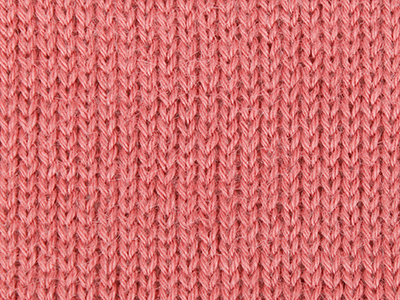

Needles: 4.00 mm
Before: 20 sts x 26 rows
After: 22 sts x 34 rows
Do you have a question about this yarn?
See a list of frequently asked questions (FAQ) about our yarns.
1) What type of fibers make the DROPS yarns?
Yarn can be made from a large number of natural and synthetic fibers. DROPS carries mainly yarns made from wool, cotton, alpaca, linen, mohair and silk. Each fiber type has its own qualities, and they are often mixed to take advantage of the best properties of each one. Coarse yarn has the advantage of being stronger and more durable, and finer fibers offers more softness and comfort. Here a bit about the main fibers we carry:
Alpaca:
Alpaca fleece is the natural fiber harvested from an alpaca, and it is similar in structure to sheep wool fiber. Its softness comes from the small diameter of the fiber, similar to merino wool. It is a soft, durable, luxurious and silky natural fiber. Yarn made from alpaca fibers does not felt or pill easily, and it can be light or heavy in weight, depending on how it is spun. While similar to sheep’s wool, it is warmer, not prickly, and has no lanolin, which makes it hypoallergenic. Alpacas come in 22 natural colors, with more than 300 shades from a true-blue black through browns-black, browns, white, silver and rose-greys.
Mohair:
This fiber comes from the Angora goats, and its considered a luxury fiber. Mohair yarn is warm as wool, but much lighter in weight; it is durable, dyes well and does not felt easily. Mohair fibers have also a distinctive luster created by the way they reflect light. Despite being a hard fiber, mohair is usually spun into a very fluffy yarn, resulting in airy and lustrous garments.
Wool:
The wool fibers comes from the skin of sheep and are relatively coarse fibers. Two striking characteristics of wool are its susceptibility to heat and its felting property, which is caused by the scales on the surface. Depending upon the breed of sheep, the appearance of the wool varies.
Wool from Merino sheep is considered the finest type of wool, having as characteristics that is finely crimped and soft. All the Merino wool in the DROPS yarns has its origins in South America, coming from sheep that have not been subject to Mulesing.
Pure new wool is wool made directly from animal fleece, and not recycled from existing wool garments.
Machine washable wool is wool treated chemically to minimize the outer fuzzy layer of the fibers, and be therefore fitable for machine wash (see Superwash).
Silk:
The silk fiber is a fine continuous fiber produced from the cocoon of a moth caterpillar known as the silkworm. While silkworm is cultivated, the wild or tussah silk is obtained from uncultivated silkworm cocoons. Silk fiber is one of the strongest natural fibers and makes a wonderful knitting yarn. It blends really well with other fibers, especially wool. Silk also dyes beautifully with natural dyes.
Vegetable fibers:
There are several varieties of vegetable fibers, found in the cell walls of plants or vegetables. Of all the varieties, two are recognized as major knitted or textile fibers. They are cotton and linen.
Cotton is the fiber surrounding the seeds in a cotton pod, and it is almost pure cellulose. Cotton is usually white in color but there are green and brown varieties as well. The cotton fiber is most often spun into yarn or thread and used to make a soft, breathable textile that is good for summer clothing and accessories, making a weaker yarn than silk or linen but stronger than wool.
Mercerized cotton is cotton that has been through a mercerization treatment. This treatment gives cotton fabrics and threads a lustrous yarn that is more lustrous than conventional cotton. It is also stronger, takes dye a little more readily, makes the yarn more resistant to mildew and reduces lint. It also may not shrink or lose its shape as much as "regular" cotton.
Linen is a fiber derived from the stalk of the flax plant that is durable and stronger than any other fiber. The linen fiber is relatively soft, straight and lustrous and becomes more beautiful with age. Linen is more comfortable to wear in hot temperatures than cotton, due to the fact that it absorbs moisture better and dries more quickly.
Other materials used in our yarns include synthetic fibers such as acrylic, viscose, polyamide (nylon) and polyester.
3) What type of information can I find on the DROPS yarn labels?
All DROPS yarn labels include information about fiber content (wool, cotton, etc.), weight in grams and ounces, length in meters and yards, washing instructions and symbols (explained here), color number, dye lot number and yarn group information.
4) What are the DROPS yarn groups?
All DROPS yarns are classified into 6 different thickness groups (A to F). Yarns in a same group have similar knitting tension/gauge, and can therefore be interchanged in patterns; however the length may be different, so when substituting always calculate the amount of meters/yards needed for the pattern to know the amount of yarn you need to get.
5) Can I use a different yarn than the one mentioned in the pattern?
Yes, as long as the yarn can be worked in the same knitting tension/gauge. Always swatch to make sure you get the same number of stitches in width and rows in height as given in the pattern.
Remember that different yarns with different textures, will give the garment different looks. The yardage/length may also be different, so when substituting always calculate the number of yards needed, in order to know the amount of yarn you need.
Read more about how to calculate the amount of an alternative yarn - and how to replace 1 thread of a yarn with 2 or more of another, here.
6) What does it mean when a yarn is “Superwash”?
A superwash wool is a special wool product that has been treated or processed in a way that allows it to be machine washable. Many people are afraid to work with wool because it is so easy to shrink (though some shrink wool on purpose) and superwash wool can allow them to work with great fibers without worry. (Read more here).
7) What does “Oeko-Tex® certified” means?
The Oeko-Tex® Standard 100 was introduced at the beginning of the 1990s as a response to the needs of the general public for textiles which posed no risk to health. The Oeko-Tex® Standard 100 is a globally uniform testing and certification system for textile raw materials, intermediate and end products at all stages of production. The test for harmful substances comprise substances which are prohibited or regulated by law, chemicals which are known to be harmful to health, and parameters which are included as a precautionary measure to safeguard health.
For more info go to www.oeko-tex.com
10) How accurate are the colours on the shade cards online?
When obtaining images for the shade card, we do our best to achieve the highest level of color accuracy. Unfortunately, we cannot guarantee how images will appear on your computer screen. Every monitor displays color differently, some colors might look darker than they really are, and some colors might be more saturated on some screens. If you experience that many of the yarn colors looks different on your screen than the actual color of the skeins, you can adjust the setting on your monitor.
11) What is a micron? What does super fine / extra fine mean?
The fineness of yarn fibers is measured in microns (thousands of millimeters). Super fine alpaca wool is 26-28 microns. Fine merino wool is less than 21.5 microns and extra fine merino is under 19.5 microns. The less microns the softer and more delicate a quality can be, the more microns the more hard wear the quality will be.
12) Why are the colors in my skeins of print yarn different?
The reason why two skeins of a same print yarn look different can be 1) that both skeins are part of different dye lots; 2) that the skeins have been dyed using a technique called "magic print" (the one used for example in DROPS Delight), which provides unique patterns and smooth color transitions to each skein, meaning also that within one dye lot, lighter or darker varieties might appear. This is no fault or defect, but part of the yarn's character.
13) My store doesn’t have the color I want, what can I do?
If your DROPS store doesn’t have the yarn color you want, try contacting a DROPS Super Store (the ones with the golden badges) - they will make sure to get a hold of the color even if they don’t have it in stock themselves. See a list of all DROPS stores here.
14) Where can I find a specific dye lot of a color?
Always try contacting your DROPS store first. If they do not have the dye lot you want we recommend you to ask other knitters and crocheters in the DROPS Workshop in Facebook or Ravelry, which may have the dye lot in their stash and might be willing to part from it.
Yarn sheds because there's not enough twist to hold all of the fibers together. All yarns have excess fibers (from production) that might come off as lint or shedding, in varied degrees that depend on how the yarn is spun. Brushed yarns ("hairier" yarns) like DROPS Melody, have more of these loose fibers than other yarns, and therefore shed more. Shedding also depends on what is worn under or over the garment, and whether this pulls at the yarn fibers. It’s therefore not possible to guarantee that there will be no shedding.
Below are some tips on how to get the best result when working with hairier yarns:
- When the garment is finished (before you wash it) shake it vigorously so the looser hairs come off. NOTE: do NOT use a lint roller, brush or any method that pulls at the yarn.
- Place the garment in a plastic bag and put it in your freezer - the temperature will cause the fibers to become less attached to each other, and excess fibers will come off easier. Leave in the freezer for a few hours before taking it out and shaking it again.
- Wash the garment according to the instructions on the yarn label. Garments worked with hairier yarns usually need to be shaken once dry after washing, so that the hairs rise and any excess fibers can come off.
Pilling is a natural process that happens to even the most exclusive of fibers. It's a natural sign of wear and tear that is hard to avoid, and that is most visible in high friction areas of your garment like a sweater's arms and cuffs.
You can make your garment look as new by removing the pilling, using a fabric comb or a pill/lint remover.
How can I replace this yarn?
If you are looking to replace this yarn with another DROPS yarn, you can use another yarn within the same yarn group, or try our yarn converter!
Other yarns in Yarn Group B
Read more about replacing yarn.Have a problem with the DROPS yarn you purchased?
When you purchase yarn from the shade cards or patterns on our site, you are not buying directly from DROPS but from one of the hundreds of DROPS stores around the world. It is therefore important that you take contact with the DROPS store where you bought the yarn, and that you save the labels of all the skeins you purchased (they are your warranty).
The DROPS store you contact will assist you and escalate the claim if necessary. Find a list of DROPS stores here.
Comments / Questions (146)
![]() Ieva wrote:
Ieva wrote:
Is off white is un dyed colour? Of drops puna? Thank you
19.12.2018 - 13:45DROPS Design answered:
Dear Ieva, the colour DROPS Puna natural off white is undyed. Happy knitting!
20.12.2018 kl. 16:59
![]() Corinna Thesing wrote:
Corinna Thesing wrote:
Hallo, kann man diese Wolle auch für einen Steek benutzen? Also ich meine für eine Strickjacke die in Runden gestrickt, nur mit Häkelkante gesichert und dann geschnitten wird (ich möchte keine Nähmaschinennaht machen)?
11.12.2018 - 21:13DROPS Design answered:
Liebe Frau Thesing, wir haben keine persönnliche Erfahrung damit, es sollte aber klappen. Am besten stricken Sie eine Maschenprobe als Test, damit Sie sicher sein. Ihr DROPS Laden kann Ihnen auch gerne weiterhelfen, nehmen Sie Kontakt mit ihm - auch telefonisch oder per E-mail auf. Viel Spaß beim stricken!
12.12.2018 kl. 14:10
![]() Joana Sérgio wrote:
Joana Sérgio wrote:
Olá! Será possível usar agulhas nº 4,5 ou mesmo 5, para um casa com trabalhado com torcidos/tranças? Ou ficará com pouca estrutura? Obrigada
30.11.2018 - 00:52DROPS Design answered:
Bom dia, Com esse número de agulhas, depende da sua tensão. Também irá depender da forma como esticar a peça. Não deve usar amaciador nunca. Aconselhamo-la a fazer uma amostra primeiro e lavá-la para ver qual o resultado. Bom tricô!
13.11.2019 kl. 10:05Alexandra wrote:
I would like to ask how much of PUNA I need for a toddler popcorn sweater (size 92)? Thank you for your kind answer. Regards, Alex
27.11.2018 - 14:08DROPS Design answered:
Dear Alexandra, the amount would depend on the style of the sweater, Wheater it would be knitted or crocheted, and also on the thightness of your knitting. Is there a particular pattern you are looking at? Generally I would buy about 200-300 gramms of the yarn for a small sweater. Happy Crafting!
28.11.2018 kl. 03:54
![]() Djediden wrote:
Djediden wrote:
Bonjour , A quand un vrai noir en Puna ? J’aime cette qualité de laine et souhaite trouver un vrai noir
03.11.2018 - 10:31
![]() Rachel wrote:
Rachel wrote:
Are the 'natural mix' shades undyed, natural shades of alpaca?
10.10.2018 - 18:53DROPS Design answered:
Dear Rachel, yes they are. Happy knitting!
11.10.2018 kl. 10:46
![]() Frédérique wrote:
Frédérique wrote:
J'adore cette laine pour faire des pulls, gilets, châle, elle est juste de la bonne épaisseur. Elle est vraiment très agréable à tricoter et porter. Mais nous sommes vraiment limités par le manque de couleurs. Avez-vous prévu d'étendre la gamme aux jaunes, rouges, turquoises...?
03.10.2018 - 09:44DROPS Design answered:
Bonjour Frédérique, nous vous remercions pour vos propositions. Bon tricot!
04.10.2018 kl. 10:41
![]() Gitte Lone Barton wrote:
Gitte Lone Barton wrote:
Hejsa, nogen chance for at der kommer en gulgrøn farve i Puna. Jeg er så forelsket i det garn, fantastisk at strikke af og så blødt mod huden. Bedste hilsner Gitte
09.08.2018 - 11:47DROPS Design answered:
Hej Gitte, tusind tak for at du ønsker. Er der en af disse farver du kan referere til? Gulgrønne garver
11.09.2018 kl. 16:13
![]() Hanne wrote:
Hanne wrote:
Hallo, liebes DROPS-Team, habe mir die Puna-Wolle in beige für eine Decke bestellt und frage mich gerade, ob die reine Alpaca-Wolle wohl fusselt?
28.05.2018 - 20:32DROPS Design answered:
Liebe Hanna, lesen Sie die Pfegehinweise von Puna und die allgemeine Tipps zur Garnpflege. Für weitere Fragen nehmen Sie bitte Kontakt mit Ihrem DROPS Laden auf. Viel Spaß beim stricken!
29.05.2018 kl. 10:42
![]() FORTIN Nicole wrote:
FORTIN Nicole wrote:
Bonjour, suite à mon commentaire, je confirme, décidément je n'aime pas ce fil, tricoté au 3.5 il ne se tient pas, le rendu n'est pas du tout régulier et pourtant, il paraît que je suis bonne tricoteuse j'ai 70 ans et tricote depuis presque toujours tricot démonté et 10 pelotes que je vais donner c'était un premier achat de fil Drops....
05.04.2018 - 15:49DROPS Design answered:
Bonjour Mme Fortin, chaque tricoteuse a sa propre façon de tricoter plus ou moins serré, plus ou moins lâche, n'hésitez pas à tricoter un échantillon avec différents tailles d'aiguilles, lavez-le et faites le sécher dans les mêmes conditions que vous laverez ensuite votre ouvrage et mesurez votre échantillon pour avoir une idée de la taille des aiguilles à utiliser pour la texture souhaitée. Pour toute assistance complémentaire sur une de nos laines, votre magasin DROPS saura vous aider, même par mail ou téléphone. Bon tricot!
06.04.2018 kl. 10:13
![]() FORTIN Nicole wrote:
FORTIN Nicole wrote:
Bonjour, laine achetée pour faire le modèle 181-7 au 4.5 l'échantillon fait presque 10 x 10cm, mais le tricot est beaucoup trop mou, trop lâche ce serait plus joli avec une taille d'aiguilles inférieures, mais il faut tout recalculer suis déçue, vais devoir acheter une autre laine, qui se tienne mieux
09.03.2018 - 10:16DROPS Design answered:
Bonjour Mme Fortin, pour vérifier votre échantillon, il est recommandé de toujours le laver et le faire sécher dans les mêmes conditions que vous entretiendrez votre ouvrage par la suite. Vérifiez ensuite les mesures et ajustez la taille d'aiguilles si nécessaire. Bon tricot!
12.03.2018 kl. 11:21
![]() Eva wrote:
Eva wrote:
Quería preguntar si Drops Puna tiene una bonita caída, apta para un chal. Entre los patrones he visto sólo dos hechos de esta lana. El primero es de alpaca pero no Puna. Quizá depende también del patrón pero me ha dado la impresión de que los bordes quedan un poco "tiesos". Tal vez Baby Alpaca Silk es más apta para un chal, pero me gustan más los colores y el grosor de Puna. Le agradecería la información.
14.02.2018 - 08:19DROPS Design answered:
Hola Eva, tanto Drops Puna como Baby Alpaca Silk son aptas para realizar un chal. Sin embargo, DROPS Alpaca SIlk tiene más caída porque lleva en su composición seda.
24.02.2018 kl. 20:18
![]() Eva wrote:
Eva wrote:
Was bedeutet es wenn bei dem Garn steht "voraussichtlicher Lieferzeitpunkt 10"? Kann ich das Garn auch vorbestellen?
06.02.2018 - 12:19DROPS Design answered:
Liebe Eva, wir sollen diese Farbe in der Wochen 10 bekommen, dann kann es noch einige Tagen dauern bis Ihr DROPS Laden einige hat. Am besten nehmen Sie bitte Kontakt mit Ihrem DROPS Laden auf, gerne werden sie Ihnen weiterhelfen. Viel Spaß beim stricken!
07.02.2018 kl. 09:30
![]() Muriel wrote:
Muriel wrote:
Comment entretenir cette laine ? Elle déteint énormément. Lors du tricot, j'avais les doigts bleu-vert. Et au lavage à froid beaucoup de déperdition de couleur. Je n'ose pas mettre mon pull de peur de me retrouver bleue-verte !
18.01.2018 - 13:05DROPS Design answered:
Bonjour Muriel, il peut arriver que certaines couleurs aient un excès de teinture, lavez votre pull en respectant bien les indications de l'étiquette mais également ceci, notamment rincez-le bien jusqu'à ce que l'eau soit clair et ne le laissez surtout pas tremper. Bon tricot!
19.01.2018 kl. 11:12
![]() Anja Nau wrote:
Anja Nau wrote:
Für die Strickerinnen von reinem Alpakagarn!! Alpakawolle ist selbstreinigend, man wäscht sie kalt und mit der Hand nur wenn man das Kleidungsstück wieder etwas in Form bringen möchte oder es richtig dreckig gemacht hat. Ein Fleck kann mit kaltem Wasser entferntwerden, keine Seife benutzen notfalls Babyshampoo. Ansonsten das Kleidungsstück im Schatten Lüften, das reicht, hilft wirklich!!!
18.01.2018 - 13:02
![]() Anja Nau wrote:
Anja Nau wrote:
Guten Tag, können sie mir sagen wieviel Mikron die Wolle für Puna hat?
18.01.2018 - 12:55DROPS Design answered:
Liebe Frau Nau, Puna ist 26 Mikron. Viel Spaß beim stricken!
19.01.2018 kl. 13:27
![]() Renate wrote:
Renate wrote:
Lovely yarn, a bit prikly but soft enough! Would love to see more colours like a lightish purple, light yellow, light blue, and a red one
09.01.2018 - 11:19
![]() Mc wrote:
Mc wrote:
Merci de prendre mes remarques en considération. J'aurais aimé trouver un jaune, un rouge ou un turquoise dans cette qualité ! Je tricote actuellement le coloris "mer du nord", alors qu'il semble être "turquoise" sur la photo" du modèle Drops 181-7, il est en réalité d'un bleu vert plutôt sombre et à mon avis assez terne
20.11.2017 - 11:55
![]() Mc wrote:
Mc wrote:
Bonjour, J'ai démarré un pull en puna. Jolie laine facile à travailler. Ceci dit, je trouve les couleurs que vous offrez vraiment tristounettes ! A quand des couleurs ayant plus de "peps"
19.11.2017 - 14:51DROPS Design answered:
Bonjour Mc, n'hésitez pas à nous proposer de nouvelles couleurs, elles seront volontiers étudiées en fonction de la demande. Merci, bon tricot!
20.11.2017 kl. 10:56
![]() Natacha wrote:
Natacha wrote:
Bonjour , je rejoins le commentaire de catherine : la puna déteint sur les mains lorsqu'on la tricote...comment va t'elle se comporter dans le temps ? Affaire à suivre.....
14.11.2017 - 17:26DROPS Design answered:
Bonjour Natacha, certaines couleurs foncées peuvent avoir un excès de teinture, suivez bien les indications d'entretien que vous trouverez ici. Bon tricot!
15.11.2017 kl. 10:31
![]() Natacha wrote:
Natacha wrote:
Bonjour, je tricote la puna en 3.5 et pas en 4 qui pour moi ne convient pas(et je tricote toujours 0.5 au dessus des indications...) je la trouve encore plus fine que la lima !Très belle qualité ,j'aurai aimé pouvoir la travailler sur des aiguilles plus épaisses...
10.11.2017 - 17:58
![]() Sabine wrote:
Sabine wrote:
Ich mag diese Garn sehr, finde nur die Farbpalette recht mager, daher meine Frage: Wird es von diesem Garn in der nächsten Zeit weitere Farben geben und (wenn ja) ab wann kann man frühestens damit rechnen? Warme Orange-, Rot- und Grüntöne wären toll!
10.11.2017 - 00:56DROPS Design answered:
Liebe Sabine, Danke für den Hinweis. Wir nehmen gerne alle Vorschläge an. Viel Spaß beim stricken!
10.11.2017 kl. 08:39
![]() Britta wrote:
Britta wrote:
Hallo liebes Drops-Team, ist der untere der beiden Knäuel mit Grüntönen die Farbe 15 "Nordsee"? Da ich keine andere Möglichkeit finde, einen allgemeinen Kommentar abzugeben, tue ich es an dieser Stelle: ich wünsche mir sehr einige Anleitungen für doppelte Loops, sie sind so schön zum Hineinkuscheln. Warum gibt es immer nur diese Kragen? Sonst finde ich eure Webseite toll. Vielen Dank für die schönen Anleitungen!
09.11.2017 - 18:20DROPS Design answered:
Liebe Britta, richtig, Farbe 15 ist unten (und Farbe 16 oben). Danke für Ihren Vorschlag, den teilen wir gerne unsere Designteam mit. Viel Spaß beim stricken!
10.11.2017 kl. 08:42
![]() Kathrin wrote:
Kathrin wrote:
Ist diese Wolle geeignet für eine klassische Herren Trachtenjacke ( Janker)? Ich würde sie gerne in hellbraun stricken? Oder welches Garn würden Sie mir empfehlen? LG. Kathrin
02.11.2017 - 22:37DROPS Design answered:
Liebe Kathrin, am besten nehmen Sie kontakt mit Ihrem DROPS Laden auf, gerne werden sie Ihnen die beste Wolle je nach dem Modell. Viel Spaß beim stricken!
06.11.2017 kl. 10:25






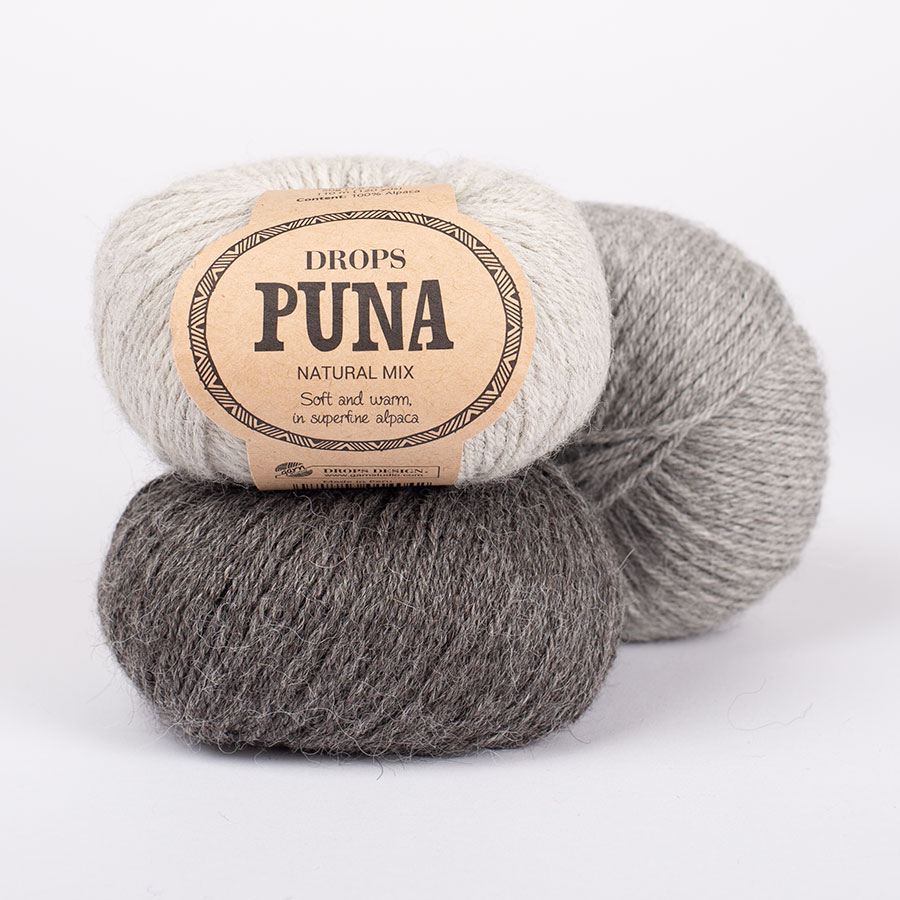

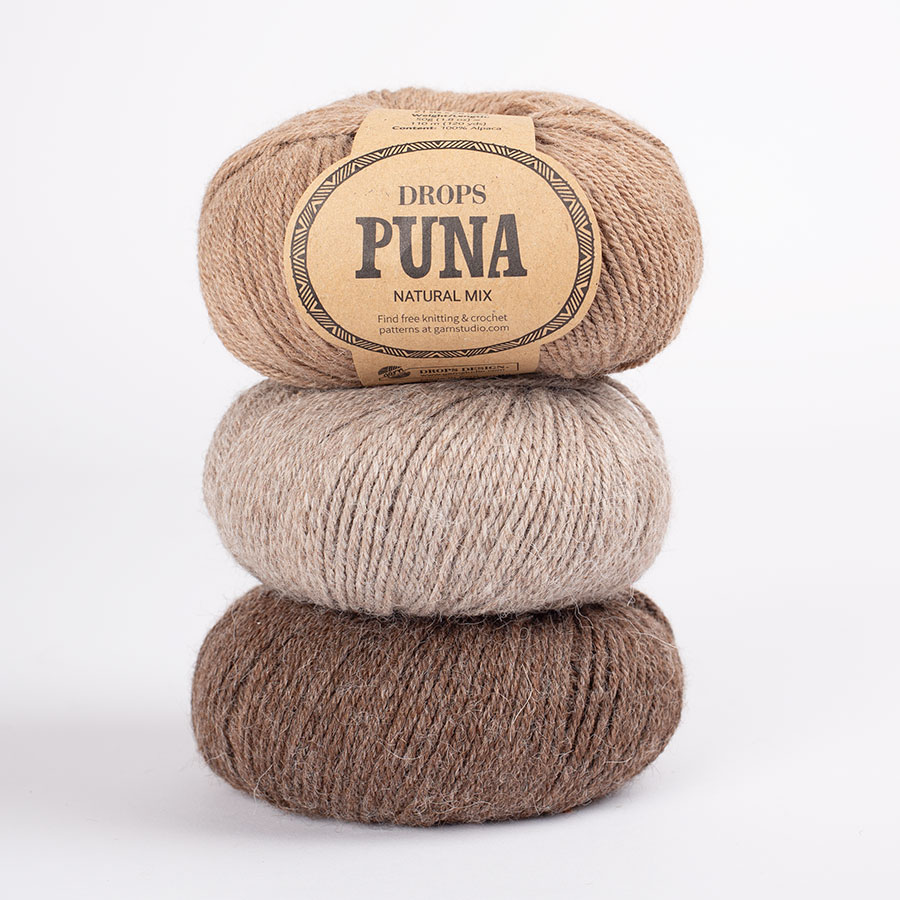
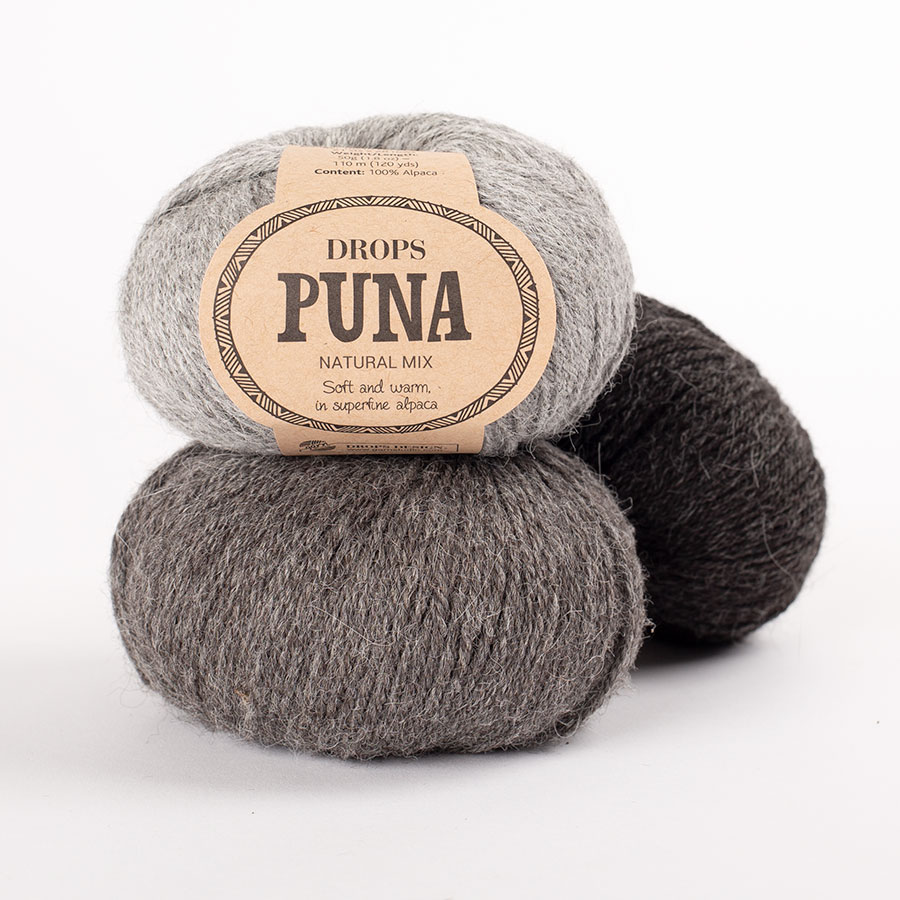
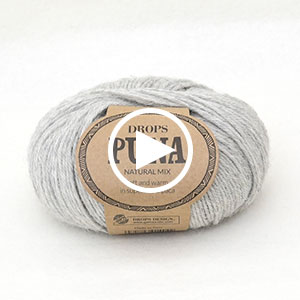








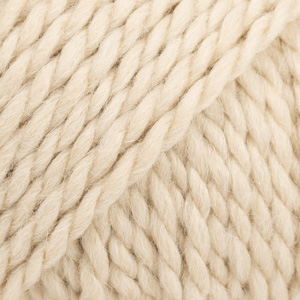











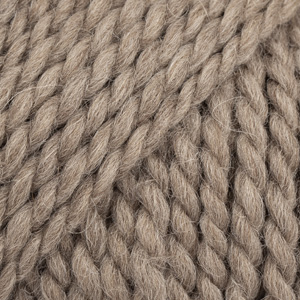

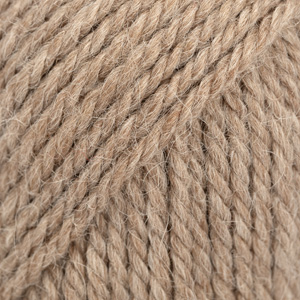


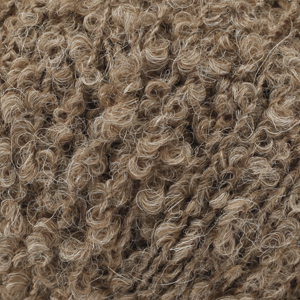








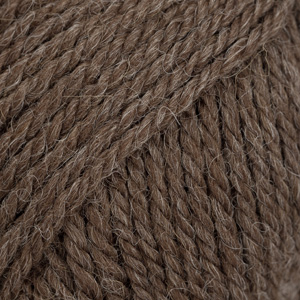

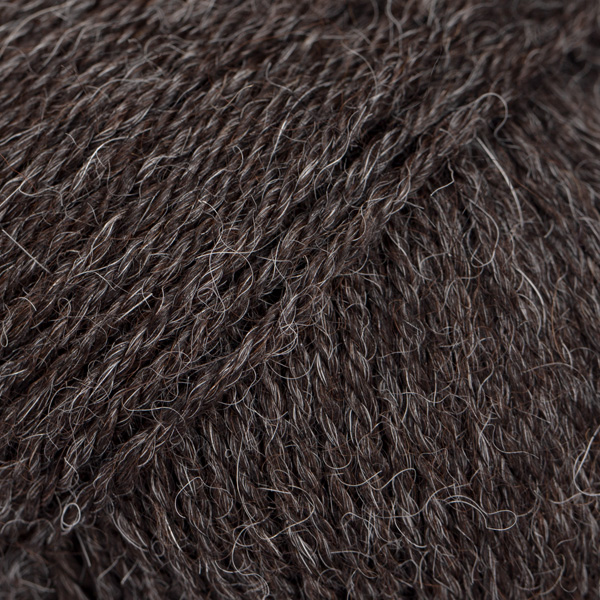



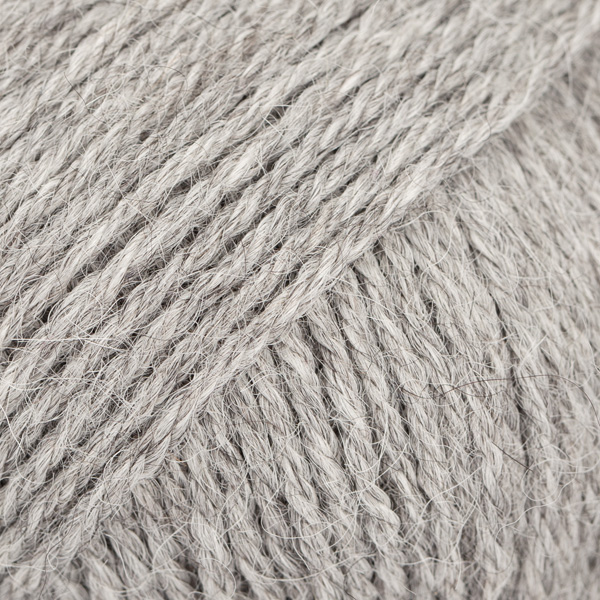




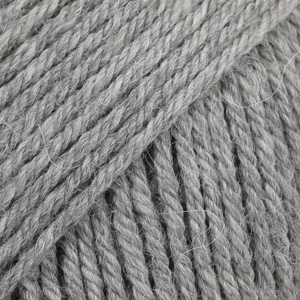




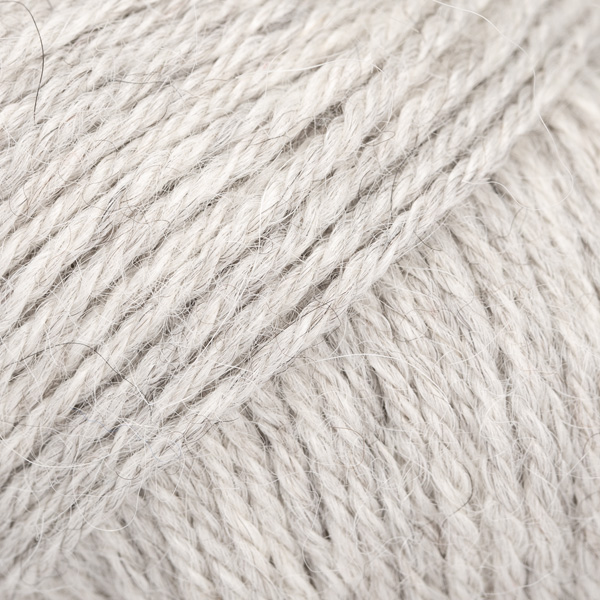


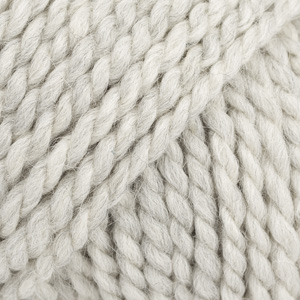















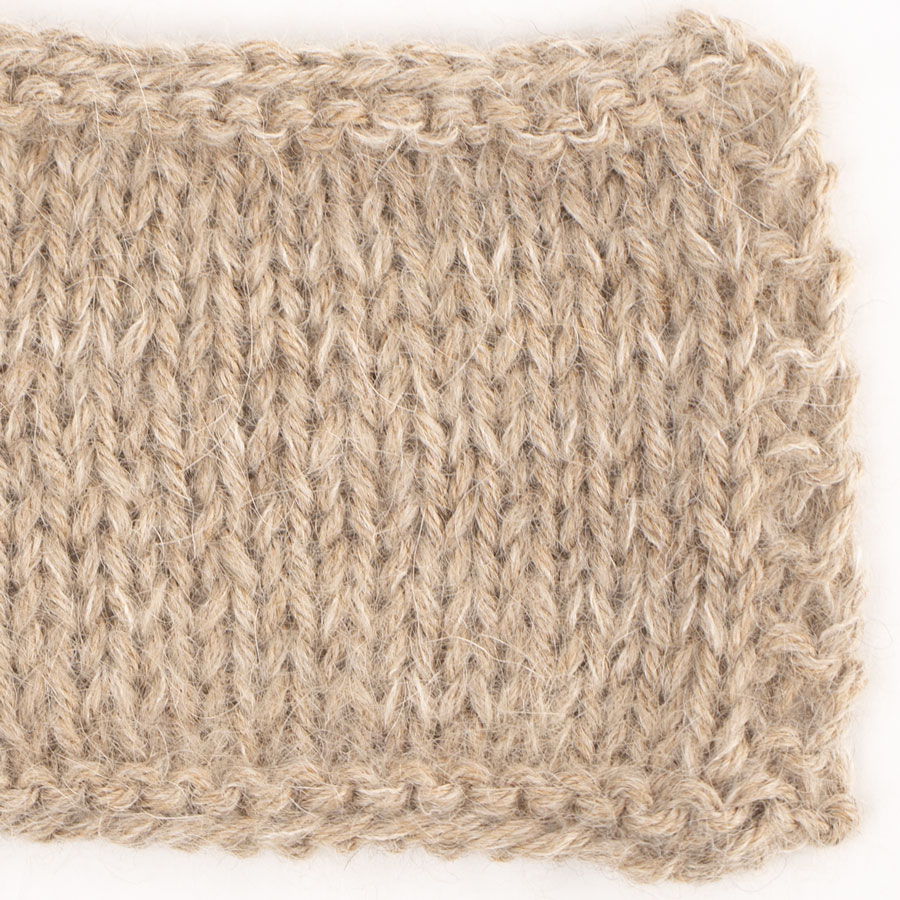
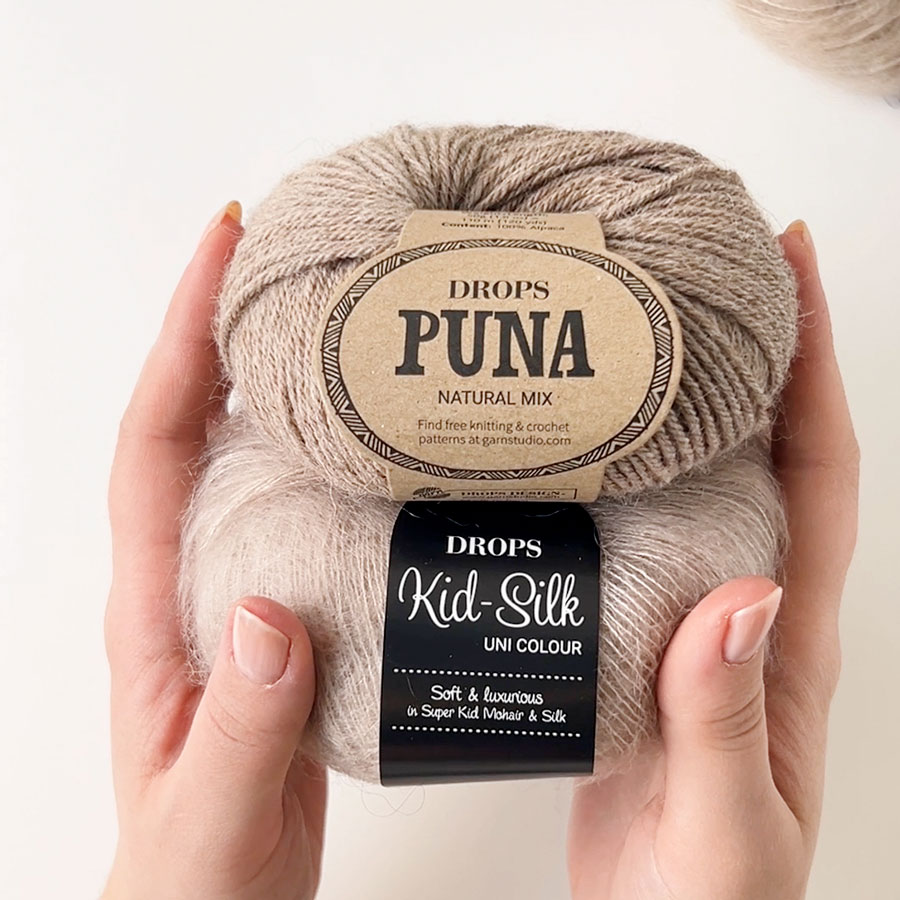
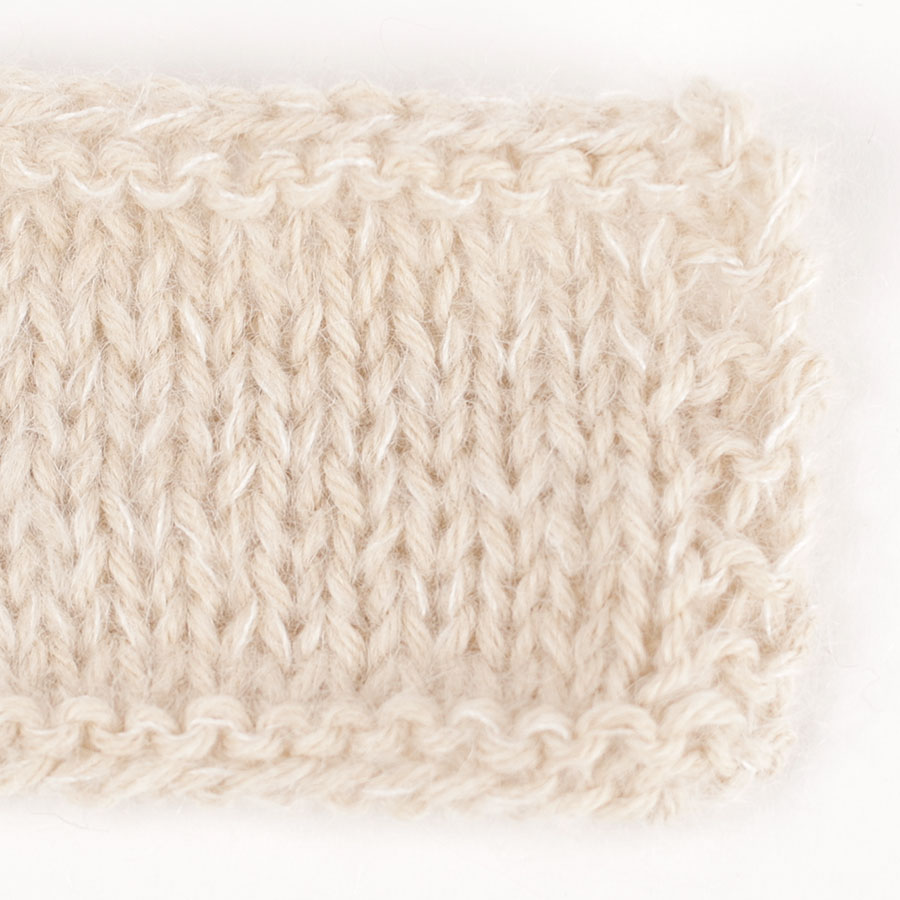
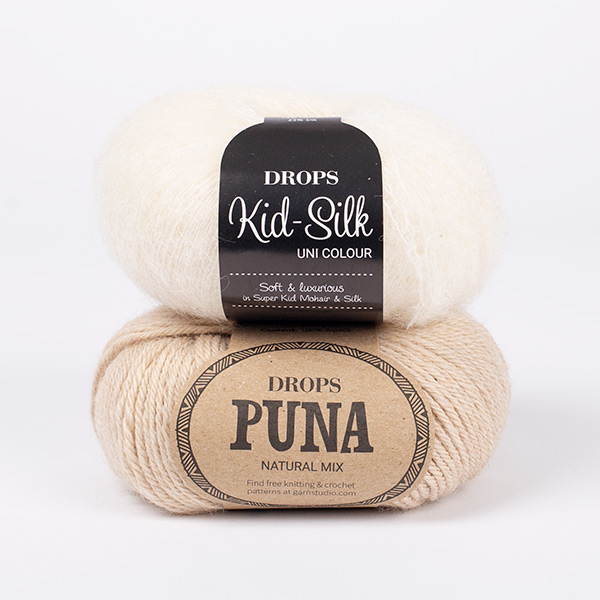
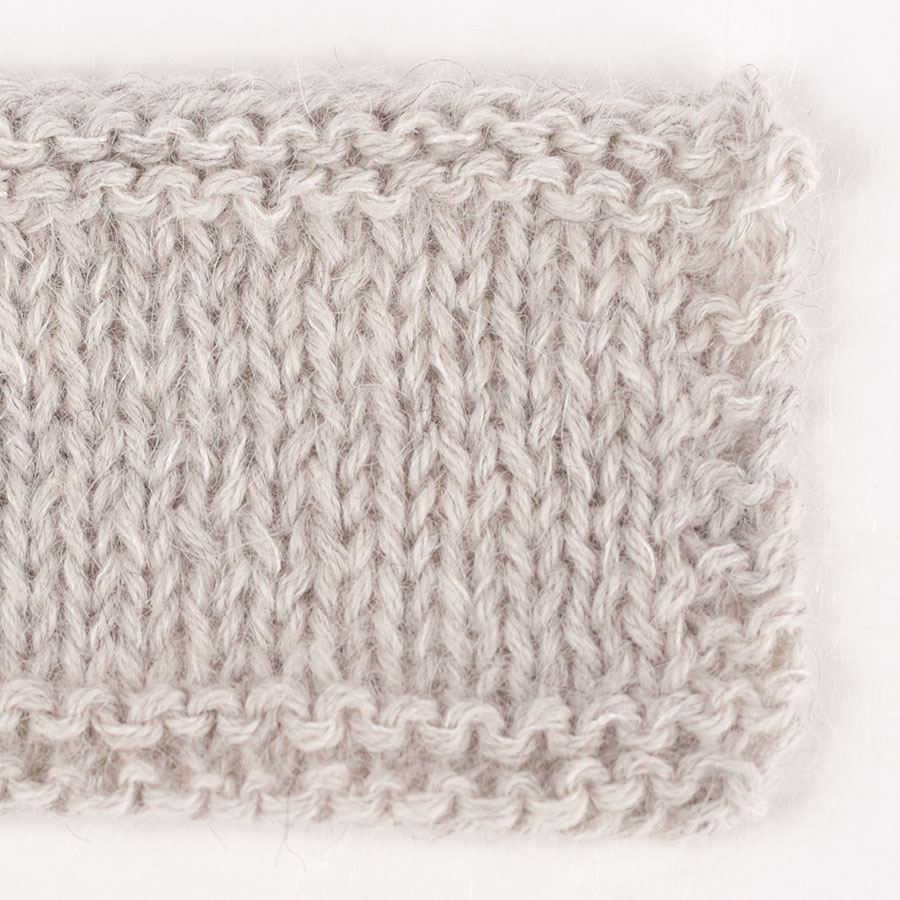
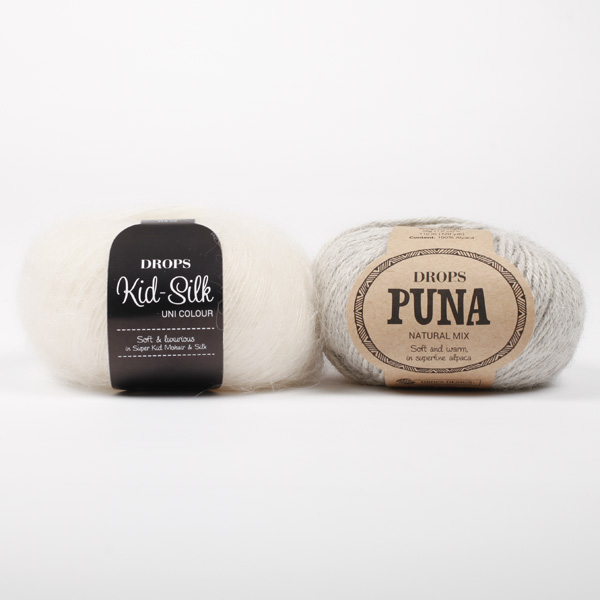





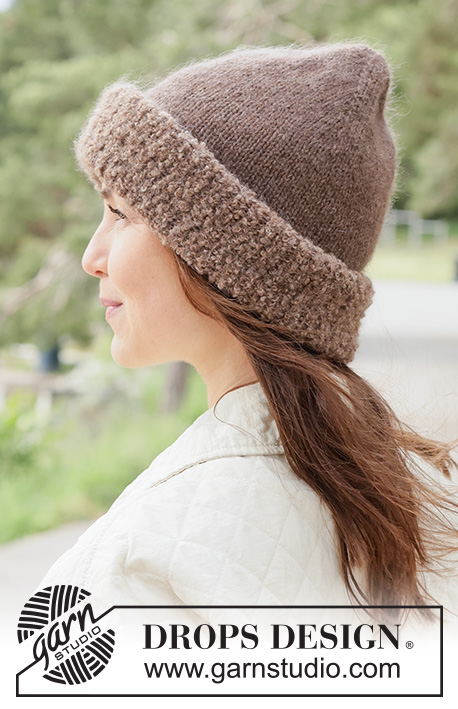



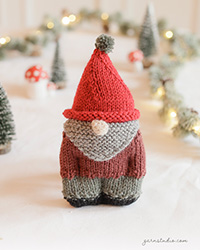

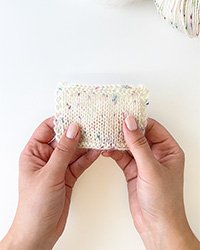

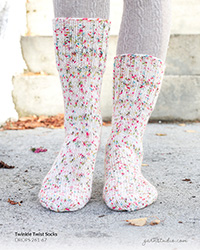
Liebes Team von Drops, habe gerade eine große Lieferung Puna 01, 04 und 07 bekommen, freue mich auf das Stricken von Schals und Mützen. Tolle Wolle zu einem super Preis!
21.12.2018 - 18:00